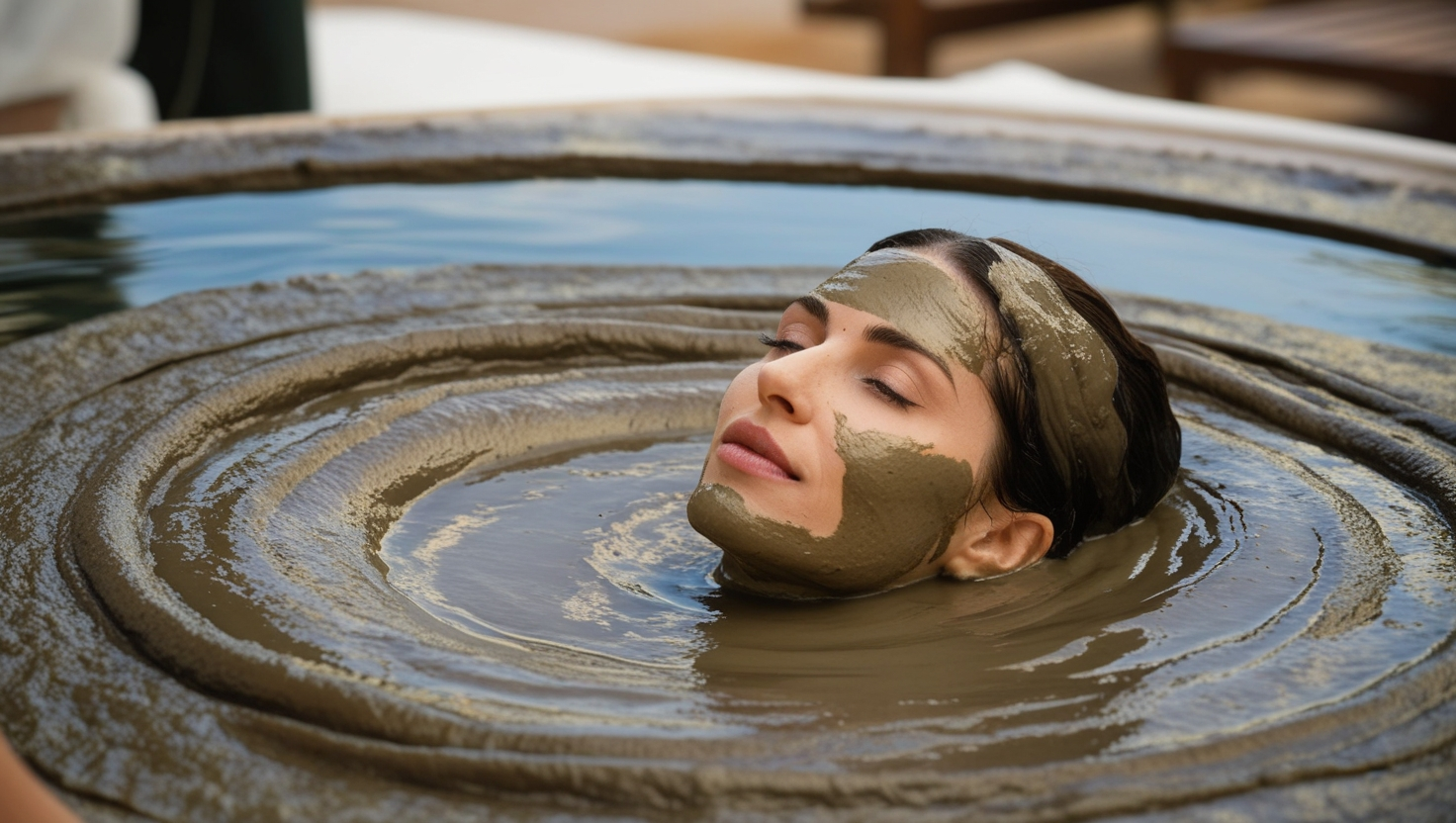Introduction to Mud Bath
A mud bath is a unique spa treatment that involves soaking in a mixture of mineral-rich mud and water. This therapeutic practice has been used for centuries across various cultures for its numerous health benefits. Typically, the mud in these baths contains a blend of volcanic ash, hot spring water, and mineral clay, creating a healing environment. Mud Baths are commonly found in spa resorts, wellness centers, and natural hot springs, offering a distinctive experience that promotes relaxation and rejuvenation.
Historical Roots of Mud Bath
The history of Mud Bath dates back thousands of years, with ancient civilizations like the Egyptians, Greeks, and Romans recognizing the healing properties of mineral-rich mud. Cleopatra, for instance, famously used mud from the Dead Sea to enhance her beauty and maintain her youthful appearance. In the 18th and 19th centuries, European spa towns continued this tradition, offering mud treatments to the wealthy and elite. Today, Mud Bath remain a popular wellness treatment, valued for improving physical and mental health.
Health Benefits of Mud Bath
Mud Bath provide a wide array of health benefits. The minerals in the mud, such as sulfur, magnesium, and calcium, help detoxify the skin, reduce inflammation, and improve circulation. The warmth of the mud can relieve muscle tension and joint pain, making it an effective treatment for conditions like arthritis and rheumatism. Additionally, the relaxing nature of a mud bath can reduce stress, promote better sleep, and enhance overall well-being.
Skin Care Advantages
One of the most significant benefits of a mud bath is its positive effect on the skin. The minerals in the mud exfoliate dead skin cells, leaving the skin feeling soft and smooth. Mud Bath can also remove impurities and toxins from the skin, which can help clear up acne and other skin conditions. Regular Mud Bat’h can improve skin tone and texture, giving it a healthy, radiant glow. Some people also find that Mud Bath help reduce the appearance of cellulite and improve skin elasticity.
The Experience of a Mud Bath
Taking a mud bath is a unique and luxurious experience. The process typically begins with a thorough cleansing shower to remove dirt or oils from the skin. Next, you immerse yourself in a warm, thick mixture of mud and water, which may feel heavy and dense against your skin. The temperature of the mud is usually kept between 100 and 105 degrees Fahrenheit (38-40 degrees Celsius), which helps to relax your muscles and open your pores. You may stay in the mud bat’h for 20 to 30 minutes, allowing the minerals to penetrate your skin and work magic.
Post-Mud Bath Care
After a mud bath, it is essential to rinse off thoroughly to remove all traces of mud from your body. This is often followed by a dip in a hot spring or a warm shower to cleanse the skin further and enhance the treatment’s relaxing effects. Many spa resorts offer additional services such as massages, facials, and body wraps to complement the mud bat’h experience. Taking some time to relax and hydrate after your treatment is crucial, as it fully benefits your body from the mud’s therapeutic properties.
Popular Mud Bath Destinations
Mud Bath are offered at various locations worldwide, each with its unique blend of mineral-rich mud. Some of the most popular destinations for Mud Bat’h include:
- Calistoga, California: Known for its volcanic ash Mud Bat’h, Calistoga has been a popular spa destination since the 19th century.
- Dead Sea, Israel: The mud from the Dead Sea is famous for its high mineral content and therapeutic properties.
- Rotorua, New Zealand: This geothermal region offers natural mud pools and spas where visitors can experience the benefits of volcanic mud.
- Baden-Baden, Germany: This historic spa town offers luxurious mud treatments from local hot springs using mineral-rich mud.
DIY Mud Bath at Home
If you can’t reach a spa, you can create a DIY mud bat’h at home. You can purchase pre-mixed mud bat’h products containing mineral-rich mud and add them to your bathtub—alternaMixud bath using ingredients like bentonite clay, Dead Sea mud, and warm water. Follow the instructions on the product or recipe, and rinse off thoroughly after your mud bat’h to avoid clogging your drains.
Precautions and Considerations
While Mud Bath are generally safe for most people, there are some precautions to remember. If you have sensitive skin, allergies, or skin conditions, it’s a good idea to consult a dermatologist before trying a mud bat’h. Pregnant women and individuals with heart conditions should also seek medical advice before a mud bat’h, as the heat and minerals can affect blood circulation. Always ensure the mud bat’h facility maintains high hygiene standards to avoid infections.
Conclusion
Mud Bath are a luxurious and therapeutic spa treatment that offers many benefits for the skin, body, and mind. Whether seeking relief from muscle pain, looking to improve your skin’s appearance, or simply wanting to unwind and relax, a mud bat’h can be a rejuvenating experience. With their rich history and continued popularity, Mud Bat’h remain a sought-after treatment for those seeking to indulge in nature’s healing powers.







